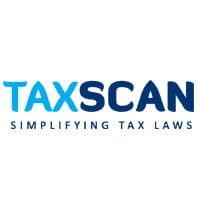AO can't impose an Addition without mentioning any Provision of Statute: ITAT [Read Order]
![AO cant impose an Addition without mentioning any Provision of Statute: ITAT [Read Order] AO cant impose an Addition without mentioning any Provision of Statute: ITAT [Read Order]](https://www.taxscan.in/wp-content/uploads/2023/09/AO-impose-Addition-mentioning-Provision-Statute-ITAT-taxscan.jpg)
The Ahmedabad bench of the Income Tax Appellate Tribunal (ITAT) held that the Assessing Officer cannot impose an addition without mentioning any provision of the statute.
As per the information available in the Revenue Department, the scrip of VAS Infrastructure Limited was found to be a penny stock scrip which has been used by beneficiaries for generating bogus long-term capital gains/bogus short-term capital loss/bogus business loss entries and it was found that the assessee traded in the scrip for Rs.3,33,411/-.
The case was reopened after recording reasons and after getting the necessary approval from the Authorities. Notice under Section 148 of the Income Tax Act, 1961 was issued and was duly served upon the assessee. The reason recorded was provided to the assessee. The assessee filed a return of income declaring a total income of Rs.1,99,700/-.
During the course of assessment proceedings, the Assessing Officer observed that since the assessee had not complied with the show cause notice, therefore, it was stated that the assessee had no explanation to offer. Thus, the Assessing Officer made an addition of Rs.3,33,411/- in respect of the said transaction.
The Authorized Representative submitted that the assessee was not given the opportunity to file the detailed reply, and the Assessing Officer as well as the Commissioner of Income Tax (Appeal) [CIT(A)] failed to take into account the reply filed by the assessee.
The Authorized Representative submitted that the Tribunal in the case of Genuine Finance Private Limited vs. DCIT, has categorically mentioned that VAS Infrastructure Limited has not been declared as Penny Stock or was not blacklisted by SEBI during the transaction period.
It was further submitted that all the details that were available with the assessee were filed during the assessment proceedings as well as before the CIT(A) but both the Authorities ignored the same.
The Departmental Representative submitted that since the assessee has not properly responded before the Revenue Authorities as well as before the CIT(A), the Assessing Officer has rightly made the addition. The Departmental Representative relied upon the order of the CIT(A) and the Assessing Officer.
The Single-member bench comprising of Suchitra Kamble (Judicial member) held that the Assessing Officer failed to give a description as to how the assessee is involved in anything related to wrongly calming the Short-Term Capital Loss or Long-Term Capital Gains.
The CIT(A) also failed to give the reasons as to how the transactions of the assessee while dealing with VAS Infrastructure Limited in the present case is a bogus Long-Term Capital Gain/bogus Short-Term Capital Loss/bogus Business Loss.
In fact, the Assessing Officer has also not mentioned as to under which provision of the Income Tax Statute the addition has been made. Therefore, the Assessing Officer was not justified in making the addition to the extent of Rs.3,33,411/-. Thus, the appeal of the assessee was allowed.
To Read the full text of the Order CLICK HERE
Support our journalism by subscribing to Taxscan premium. Follow us on Telegram for quick updates
Shri Dhirubhai Kantilal Sharma vs Income Tax Officer , 2023 TAXSCAN (ITAT) 2299 , Shri Sulabh , Ms. Saumya Pandey Jain

